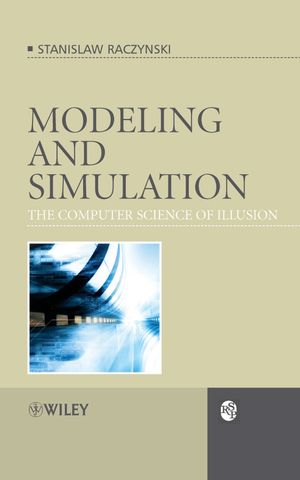Modeling and Simulation: The Computer Science of IllusionISBN: 978-0-470-03017-2
Hardcover
232 pages
July 2006
 This is a Print-on-Demand title. It will be printed specifically to fill your order. Please allow an additional 10-15 days delivery time. The book is not returnable.
|
||||||
Preface.
Chapter 1. Basic Concepts and Tools.
1.1. Modeling and simulation: What is it ?.
1.2. Validity, credibility, tractability and verification.
1.3. System state and causal systems.
1.4. Classification of dynamical systems.
1.5. Discrete and continuous simulation.
1.6. Evolution of simulation software.
Chapter 2. Continuous simulation.
2.1. Introduction.
2.2 Ordinary differential equations and models of concentrated parameter systems.
2.3. Continuous simulation with analog computers.
2.4. Numerical methods for ordinary differential equations (ODE).
2.5. Signal flow graphs.
2.6. Bond graphs.
2.7. Alternative modeling tools and dynamic uncertainty.
2.8. Distributed parameter systems.
2.9. System dynamics.
2.10. Galactic simulations and the N-body problem.
Chapter 3. Discrete and combined simulation – example of PASION implementation.
3.1. Are discrete models valid?.
3.2. PASION simulation system.
3.3. Queuing Model Generator QMG.
3.4. Complex system simulator of PASION.
Chapter 4. Differential inclusions in Modeling and Simulation.
4.1. Differential inclusions.
4.2. Possible applications.
4.3. Differential inclusion solver.
4.4. Application in uncertainty treatment.
4.5. Uncertain future and differential inclusions.
4.6. Conclusions and future research.
Chapter 5. Fluid dynamics – simulating oscillating gas flow.
5.1. Computational fluid dynamics.
5.2. Numerical problems.
5.3. The simulation tool.
5.4. Examples.
5.5. Oscillating gas flow.
5.6. Two-dimensional fluid-dynamics models are invalid.
5.7. Conclusions.
Chapter 6. Simulating Phenomena of General Relativity.
6.1. Some basic concepts.
6.3. The simulation tool and model time.
6.4. Simulation experiments.
Chapter 7. Interactions between hostile hierarchical structures: simulation of the struggle between terrorist and anti-terrorist organizations.
7.1. Introduction.
7.2. The model.
7.3. Structures.
7.4. The tool and the model implementation.
7.5. Simulation experiments.
7.6. Conclusions.
Chapter 8. On a metric structure in the space of dynamic system models.
8.1. DEVS.
8.2. Definitions.
8.3. Distance between models.
8.4. Examples.
8.5. Conclusions.
Chapter 9. Simulation optimization: A case study of a parallel optimization algorithm.
9.1. Introduction.
9.2. Problem statement.
9.3. Simulation experiment.
9.4. Conclusions.
References.
Index.



